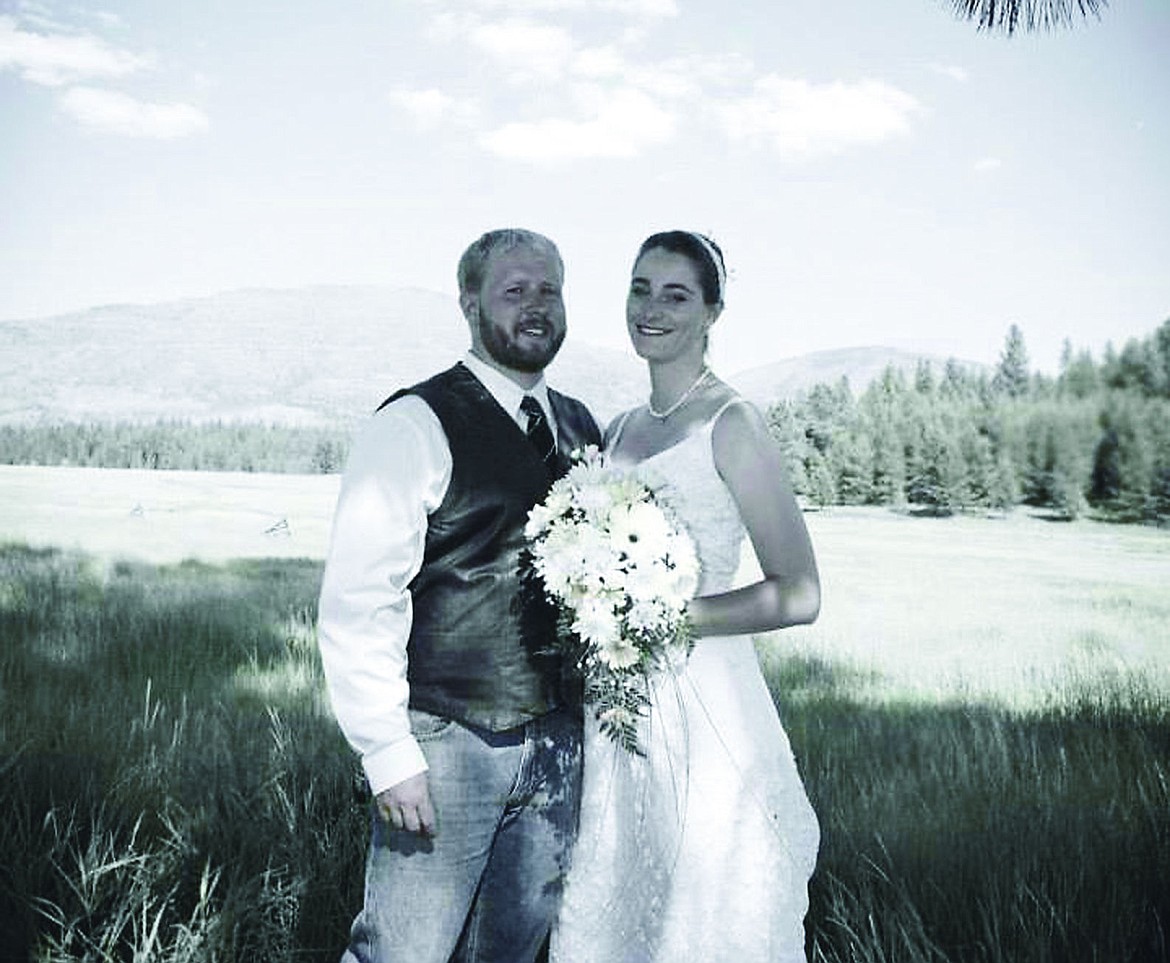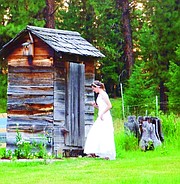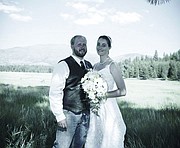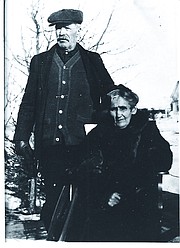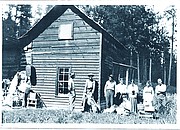A tradition of being wed at a family heritage site
SANDERS COUNTY - Today, the Stobie Ranch, which holds a special significance for the Stobie family and a lot of Sanders County residents, has a very exceptional history, including horse thievery and a lineage of brides who were wed there. And that wide array of history all leads to one individual, Robin Miller of Hot Springs.
Miller’s story begins far back at the turn of the century with the original Stobie family homesteaders. It is her ancestors, which started the now, well known ranch.
The ranch was first homesteaded in the late 1800’s by the Cook family. One of the Cook’s sons was a horse thief and kept his ill gotten gains at the secluded ranch. Eventually the law caught up with the Cook’s son and his bail was set at $500. The Cook’s had to sell 40 acres of the original 160 acres of the land and timber rights to a logging company. Eventually, the Cook’s sold the Ranch to Joseph and Lucinda Stobie around 1912.
The Stobies had four children; Herbert, James, Anna, and Vic. Victor, the youngest, would eventually be the one, through his offspring, to keep the ranch in the family.
The oldest sons of the Stobies, Herbert and James made a name for themselves as the, “Wild Stobie Boys,” while living on the ranch. There were accounts of bear rousting in the winter, and at one point Herbert owned eagles. Eventually, Herbert was accidentally shot in the leg when his horse bucked him off. The doctor, who was reportedly a drunk, could not save the, “Wild Stobie Boy” and he died. The doctor fled and was never heard of again. James died seven years later in New York trying to recover from a mustard gas attack while he was overseas during World War One.
The Stobies’ only daughter, and the first bride to be married at the Ranch, Anna, married a man named Victor Hugo French, and maintained a family on the ranch. With her husband, they had three children and adopted another child.
Vic, the youngest son of the first Stobies, worked with his parents on the ranch, raising cattle and boarding loggers out of the home. Evidence of the boarders can be seen in the house, with little indents in the wooden floors, made by the spikes on the bottom of the loggers’ shoes. Vic, also an avid outdoorsman, hunted and was an outfitter. He eventually married family friend Ruth Aeimseigger. Anna adopted one of Vic’s and Ruth’s daughters when they passed away.
Eventually, as tradition would have it, there would be three other Stobie brides married at the ranch. Vic and Ruth’s daughter Peg McCarthy, would be the next, then Ruby Stobie, Robin Miller (formerly Robin Stobie), and then with a little twist in tradition, Robin’s son Jase and his wife, Katie Petteys.
Fast forward to the 21st century and the ranch, which eventually became more of a vacation site for the Stobie family, has garnered much appreciation by the family and Sanders County residents as a place of relaxation and retreat. It has also become a family tradition for a bride to be married there. Miller explained her appreciation for her son’s wife’s decision to be married there, despite her being from a different family. “She really wanted to get married up there. I’d never thought I would have one of my boys get married up there,” Miller said.
Miller, who will be buying the ranch, gave an explanation of the ranch’s importance to the family and Sanders County as a whole. “It was just the kind of place we spent all summer up there. For me that is where I grew up and then when I had my kids that is where I would take them.” She then explained how, including her extended family, friends would hold hunting parties and gatherings at the secluded 120 acre ranch. At one point, Miller said that the Boy Scouts would even host jamborees at the ranch.
The Stobie family used to keep the ranch open and the house open for hunters or people who became stranded as a place to find shelter from the elements but, at one point, it was vandalized by teenagers.
Miller said that a deer was left in a dry well, furnishings were broken and burned. She said that, instead of dropping a match in the place, before her son’s wedding, it was instead decided that the house would be repaired and refurbished.
Now that the ranch house has been refurbished, Miller has no plans for the place to leave the family. She is confident her son will have a daughter who will get married there.
Though not able to fully express in words what draws so many to the ranch, Miller says, “I think you’re away from everything, there is no electricity, you don’t have any responsibilities, nobody can call you. It’s one of those places you go to relax.”



